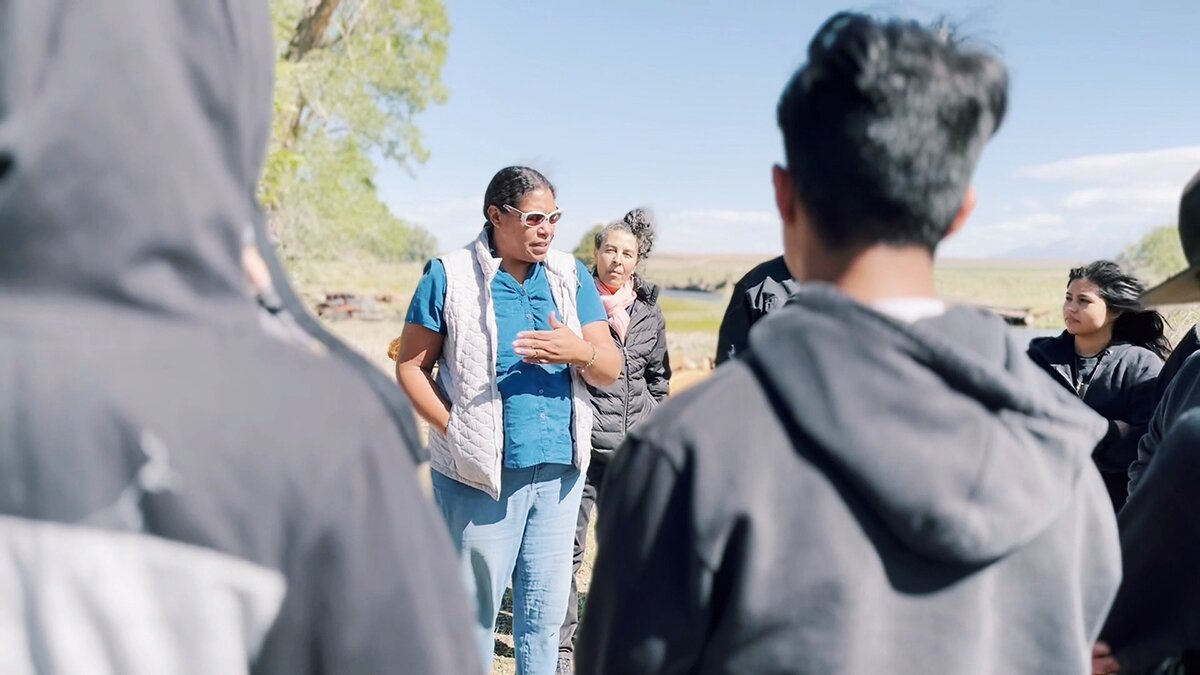Pollination station: A Native New Mexican beekeeper builds bee homes with Costilla County residents

COSTILLA COUNTY, Colo. — June was National Pollinators Month, highlighting the crucial role pollinators play in the cycles that supply our food chain and fuel our world.
At the end of May, Governor Jared Polis signed the Native Pollinating Insects Protection Study bill, calling for a review of pollinators’ associated ecosystems, health, and resilience in the state. The bill requires recommendations from the Colorado Department of Natural Resources regarding the protection of native pollinating insects by January 1, 2024.
Pollinators are any insect — or animal — that intermingle pollen between plants. According to the CSU-Arapahoe Extension Agency, they’re responsible for one-third of the human diet including vegetables, fruits, and nuts. Over 75% of plants on earth need pollinators.
But pollinator populations, like bees, are declining, and conservation takes local solutions — and dedication from the community, the Extension Agency notes.
In San Acacio Viejo, local solutions and dedication intersected with a visit from Native New Mexican beekeeper Melanie M. Kirby (Tortugas Pueblo and Chicana) of Zia Queenbees. Kirby’s company supports hives and their caretakers, including bee tours, beekeeping supplies, and community presentations.
Move Mountains Project of San Luis, a youth program that addresses access to land and food security, worked with Kirby in mid-April to build new bee homes. Last week, Kirby delivered four boxes of bees and offered a day of continued education to usher in the crop pollination season.

Cooperative farmers of the Río Culebra Watershed also joined Kirby’s workshop. Through a Colorado Health Foundation project grant with the Acequia Institute, they’re growing crops to support the local food chain at the San Luis Peoples Market.
The group welcomed hives at the Acequia Institute headquarters in the bottomlands of San Acacio Viejo near the banks of the Culebra River, and a few miles northeast, higher in the chamiso foothills near Chama, on the edge of a field planted with crops for the market.
During the workshop, Kirby instructed how to establish bees in a new home. After placing a wood pallet at the selected site, Kirby centered a bottom board on the pallet, then aligned a newly constructed bee box on top. The bee box is a brood chamber, Kirby said — the main nest where the queen will lay eggs. Kirby’s hives were bred from a mix of a few types of few different honey bee races acclimated especially to cold weather and high altitude, she said.
Kirby will return in July to check on the hives and answer any follow up questions. In the meantime, she demonstrated bee care for those who will tend to them ongoing. During the workshop, youth donned veils and gloves and took turns working with the bees.
Most times, bees that come near us are just exploring, and swatting threatens them, and they are more inclined to sting, she said. Smoke from a small metal bee smoker serves as a tool to calm the bees, though Kirby noted these hives were very gentle. Hives have personalities, and some can be more aggressive than others, she explained.
“This type of stewardship really requires us to try to learn their language, and see what they need,” Kirby told the group. “A lot of that is good, healthy food. Food is medicine. Like us, if they have good nutrition, then their immune system will be strong, and they can better deal with illnesses.”
Kirby showed elements of the box, like an entrance reducer — a small slat that will reduce air flow and maintain hive warmth in the wintertime. When flipped in the summer, a larger gap allows for aeration and higher traffic. Without an entrance reducer, Kirby said, sometimes mice or lizards could get into a hive.
With over 20,000 bee species in the world, 946 are native to Colorado. Like horses, honey bees were native to this continent, then extinct, and reintroduced later, Kirby said, explaining she likes to regard these bees as relatives to those ancestors from 14 million years ago.
As a 2019 Fulbright-National Geographic Storytelling Fellow, Kirby traveled across Spain to survey bee mating behavior and to understand how honeybees are adapting to shifting environmental stressors.
National Pollinators Month brings awareness to local pollinator populations which are at risk due to habitat loss, pesticides, and erratic weather patterns due to climate change. The campaign suggests actions people can take to support pollinators, like growing wildlife gardens, providing bee habitat, avoiding pesticides, and No-Mow May, a movement to let dandelions and other flowering plants flourish for a little longer so pollinators can do their work.
There’s even an official Pollinator Week, June 20-26. Learn how you can participate, help spread the word, or add a pollination event of your own by visiting the Pollinator Week website.
Kate Perdoni is a multimedia journalist with Rocky Mountain PBS and can be reached at kateperdoni@rmpbs.org or on Instagram at @kateyslvls.